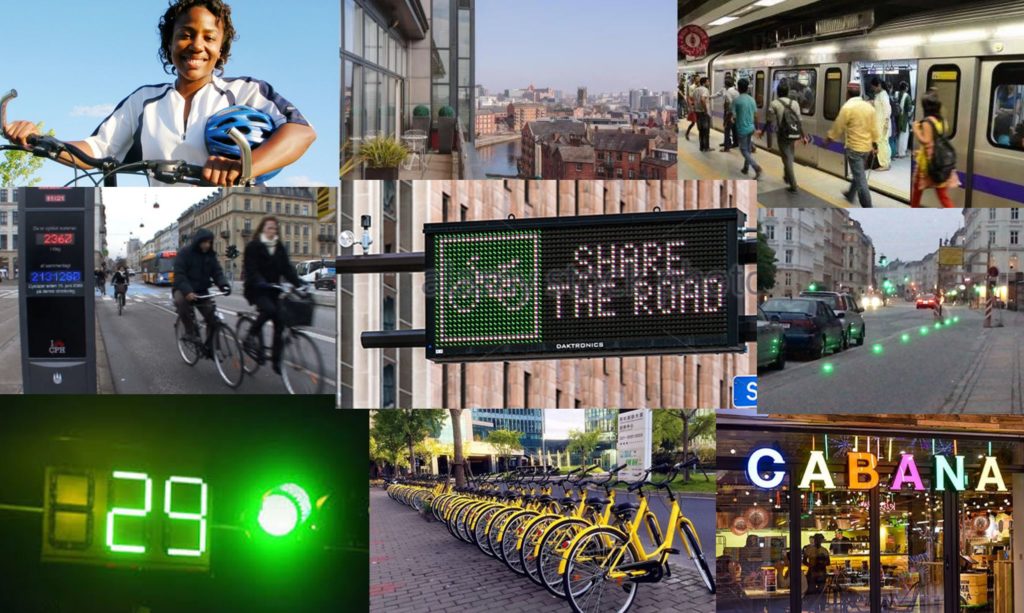
Paul Osborne, local transport planner, used the Festival of Ideas event on Re-imagining The City to paint a picture of a future journey.
Let me take you on a journey into the future. How far into the future is up to you…
I leave my 4th floor apartment in Moortown, Leeds. It’s eight o clock and overcast. I’m a bit late but hey, it’s not often England make the world cup final, two tournaments in a row.
My phone alerts me – my train is leaving on time and there’s a city bike waiting for me at the end of the street. As I approach, the bike unlocks itself and my phone pings to tell me that it has been serviced and the tyre pressures are fine.
I set off, humming a tune from the morning’s breakfast show. I pass the kids making their way to school, some of them wearing their replica England shirts. The bins are out for collection. The pothole which had opened up the day before, has been fixed.
The car ahead, automatically limited to 20mph on all residential streets in the city, moves to the right to let me through, the driver alerted to adjust his position by his in-car sensors. I thank him as I go by and his daughter smiles at me through the car window.
At the next junction I have a left turn towards the city centre, I wait for a gap in the steady flow of inbound cyclists, safely separated from traffic. I join them and soon we are travelling at a steady 12 mph, nudged along by the coloured LED lighting in the roadway, sequenced to progress us through the next three sets of traffic signals.
We ride the green wave until we reach the first busy intersection. Countdown signals tell me how long we’ll be waiting, time enough to break into conversation with the cyclist next to me. She smiles and recommends a restaurant down a local side road – it does great vegetarian pizza.
The lights change, she’s quicker away than me. We pass the cycle counter which detects us as we pass, flashing up the daily and annual cycle flow. It feels good to be part of a crowd.
One hundred metres later (oops I mean yards – I’m still getting used to our return to imperial measures) and a variable message sign thanks me for not using the car. It flashes up the predicted journey time to the city centre, currently 30% faster than the vehicle flow beside me.
We reach the Sheepscar interchange. Plans are afoot to bury this huge junction below ground level and leave buses, bikes and pedestrians to take the surface route. In the meantime, images of live CCTV footage are projected onto huge LED screens to enforce the new bus and cyclist priority measures, funded by the city’s health investment strategy.
There’s one short hill into the city centre but the electric assist on the bike kicks in, keeping my speed and effort consistent. I join another green wave, having covered my five mile mile journey to the station in just under 25 minutes.
My bike locks itself as I leave it in the bike park. My phone logs the distance I’ve covered and updates my reward points. I get the choice to top up my integrated public transport pass or spend it at my neighbourhood shops. The bike downloads information about the journey, alerting the bike share company to its location, and passes data about air quality, traffic conditions and road surface condition along my route to the city’s transport team.
I head for the train, flashing my Owl Card (the Leeds equivalent of Oyster), I find a seat and decide on a good night to try out that pizza.
As Paul noted afterwards, many of the “futuristic” ideas in that story are already reality somewhere in the cycling-friendly world. If you spot a link to one of them on the net, tweet us at @my_futureyork and tell us where it’s already happening!